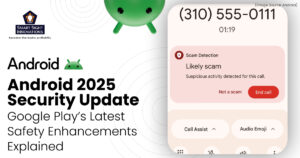 The year 2018 marks a new milestone for mobile application development companies as mobile stands out with a plethora of opportunities.
The year 2018 marks a new milestone for mobile application development companies as mobile stands out with a plethora of opportunities.
Mobile consumption rates are increasing at a staggering pace and the global mobile reach is expected to go up to 4.68 billion on average by 2020 (Statista reports). Solution providers are looking to further optimize on the applications’ existing functionalities through collaboration, innovation, and strategic partnerships.
The large-scale impacts of mobile had far-reaching effects on complimentary territories like programming, data security, cloud hosting, analytics, device and network security and virtual services. This synergy between mobile-driven innovations and smartphone proliferation are driving mobile application developers to push the envelope for better market reach, customer satisfaction, increased sales and higher revenue.
Based on the most recent industry research and deep-market survey, Smart Sight lists out the upcoming mobile application development technology trends to watch out in 2018:
- Augmented Reality: Earlier predictions on the global market for augmented reality or AR suggests that it would reach up to 200 million users in 2018. The current data on its revenue growth rate forecasts close to 659.98 million by the end of this year. Market leaders like Microsoft too indicated about possible enhancements of their AP-applications. These findings suggest a huge promise of integrating the key AR functionalities in mobile application developments.
- Rise of Artificial Intelligence: When Siri was integrated into Apple’s applications in 2017, it demonstrated the possibilities for using AI to add robust functionalities to perform unique activities. By far, AI has been accessible for industry giants that have infrastructural and resource bandwidth. Emerging businesses and start-ups too are looking to find ways to leverage AI in cost-effective ways.
- Bots: Virtual assistants and bots are growing in relevance both organically and multitudinously. Gartner reports that chatbot interactions are likely to shoot up to 93 percent in 2022. Retail, banking and customer-centric businesses have a golden chance to build highly scalable mobile applications that perform a range of functions without needing manual interventions, inaccuracy risks and costs involved in serving large volumes of customers.
- IoT: After setting the trends as the industry 4.0 in the manufacturing space, IoT or internet of things is no longer a new phenomenon. B2C and B2B companies are implementing smart approaches and practices. Mobile application developers can adopt the ‘smart’ concepts to enable a unified view on actions, transactions, data and products or services on apps.
- Mobile Cloud Computing: Cloud has been the primary platform for the storage of mobile application data for reliability, speed, accuracy and scalability. This trend is expected to continue in the mobile application development space as cloud applications will account for 80 percent of mobile data traffic by the end of 2019, suggests research data of Cisco.
- Mobile Payment and Blockchain: Blockchain set a new standard with virtual currency, Cryptocurrency. Since then, there has been no looking back for mobile application developers in the FinTech companies to build platforms that remove a central authority out of the picture and enable mobile payment facilities. In the recent past, there has been a significant rise in mobile payment apps and banking platforms implementing the cutting-edge scan and pay systems. The possibilities are high for more payment solution providers to flood the markets with innovative and secure payment on mobile applications.
- Mobile Security Applications: The convergence of mobile in enterprise scenario has increased the scope for security risks and threats. To prevent data wipes, data hijacks, and malicious attacks, developers are leaving no stone unturned to augment security features and solutions that can be integrated to mobile platforms and applications.
- Wearables and Connected Devices: The convenience of mobile and wearables have bombarded the markets with innovative, smart devices like smartwatches that have easy access to data and support cloud integrations to allow secured exchange of information and track actions in real-time. Mobile applications that can collaborate with wearable devices has a huge promise in 2018.
- Mobile e-Commerce Platforms: Mobile e-Commerce market is on an endless growth-spree with the development of mobile payment solutions, POS systems, webstores, payment kiosks, digital signage and much more. 2018 is an ideal phase for mobile application developers to explore the e-Commerce and retail payment space to build a number of platforms that assist both customers and retailers during the entire sales cycle, right from the initial market research stage to post-sales.
- Location-based Services: Marketers and retailers are dipping their toes in the location-based services segment and use geo-fencing technology to send service or product notifications, trigger responses, enable personalized shopping experiences and drive conversion. Mobile application developers can leverage the potential of Bluetooth, beacons and location tracking technologies for a stronger foothold in the B2B and B2C retail segment.














